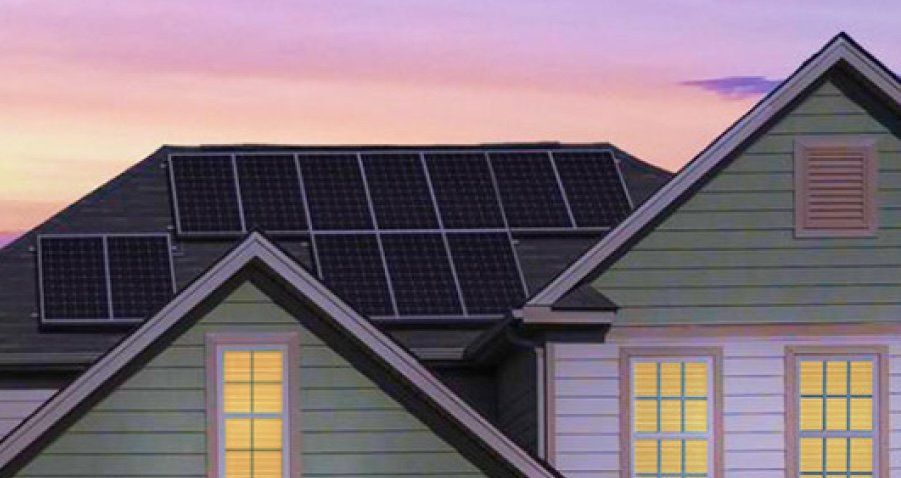Sign up for CleanTechnica’s Weekly Substack for Zach and Scott’s in-depth analyses and high level summaries, sign up for our daily newsletter, and/or follow us on Google News!

US President Trump snuffed out practically the entire domestic offshore wind industry upon taking office in January, but the rooftop solar movement is a much tougher beast to kill. A case in point is the leading domestic solar firm Sunrun. In a major pushback against Trump’s love affair with all things fossil, the company has just launched a first-of-its-kind incentive plan aimed at equipping more households with rooftop panels and home energy storage systems, too.
Bucking The Rooftop Solar Headwinds
The domestic rooftop solar industry could certainly use a pick-me-up. Times are tough these days. The former rooftop leader Tesla, for example, stopped reporting its sales in 2024 after suffering through four straight quarters of decline. Go ahead and blame Tesla’s spiraling brand reputation if you will, but solar industry watchers have noted a broad slowdown in activity globally, and other domestic rooftop companies have also been in a fix.
In March Financial Times recapped the situation in the US, noting that another residential rooftop solar industry leader, SunPower, filed for bankruptcy protection in the summer of 2024. FT also name-checked the solar installer Sunnova, which is prepping for bankruptcy according to a report in Bloomberg last week.
“Longer interest rates and an American president hostile to anything resembling clean energy are a toxic combination for companies with burdened balance sheets,” FT observed, also drawing attention to the uncertain future of solar subsidies under the Inflation Reduction Act of 2022.
Next Steps For The Rooftop Solar PPA
FT also cites the solar-as-a-service business model as a contributor to the financial instability of some US rooftop stakeholders. As a sort of power purchase agreement in miniature, solar-as-a-service relieves homeowners from the up-front cost of installing rooftop solar panels. Instead, they pay off the project in small installments, through monthly bills. That system worked for the rooftop solar industry until higher interest rates kicked in, among other factors.
“Clean energy companies have relied on cheap money and government subsidies to sustain them until they reach escape velocity. Those boosters have all disappeared at the same time,” FT summarized.
The Power Of The Power Purchase Agreement
Somewhat ironically, Sunrun can take credit for introducing the PPA model to the residential rooftop solar field all the way back in 2007, so it stands to reason that the innovative company would figure out another transformative financial transaction to help kick its business up to the next level while others falter (see lots more Sunrun background here).
On Wednesday, Sunrun announced the launch of its new “Sunrun Flex™” service, billing it as the “first solar and battery storage solution designed to adapt to customers’ changing energy needs.”
The new service provides solar-curious homeowners with assurance that their solar PPA will adapt to their benefit, even if (and when) their electricity demand rises.
Rise it will, according to Sunrun. The addition of new family members is one factor that can lead to rising demand after a homeowner installs rooftop solar panels. The new family member doesn’t necessarily have to be human, either. A new EV, for example, can push the electricity demand numbers up when a home charger is available, and the overwhelming majority of EV owners prefer to recharge at home.
“We know households that go solar increase their energy consumption by about 15% within the first year,” SunRun President and Chief Revenue Officer Paul Dickson notes.
“It’s also not uncommon for solar customers to adopt an electric vehicle, which drives up their energy consumption even more,” said Dickson adds.
The new Flex program includes a home storage unit to help cure a common issue with new rooftop solar arrays. “Until now, home solar systems were designed to either match a household’s current energy usage or be oversized in anticipation of future needs — potentially resulting in either unmet needs as energy usage increases or generating solar energy that is not used immediately,” Sunrun explains.
Rooftop Solar Is Just The Beginning
Under the Flex model, ratepayers get a predictable, locked-in monthly minimum rate based on their pre-installation electricity consumption. They only pay an additional “Flex Rate” during months when they exceed their baseline. Sunrun also guarantees that their annual payment will never exceed the electricity produced by their solar panels.
That’s a nifty way of incentivizing energy conservation. As an additional, first-of-its-kind energy-saving incentive, the Flex model also enables customers to earn rollover credits when they use less electricity than their baseline. They can bank those credits to offset any baseline-topping increases in their electricity use, including seasonal spikes. If the local utility provides grid services incentives to their ratepayers, Flex customers are automatically enrolled in those, too, providing an opportunity to sell extra kilowatts back to the grid.
Also sweetening the pot is the home battery, which comes standard with of the Flex package. Sunrun anticipates that its customers will use the battery routinely to avoid peak rates, in addition to deploying it as an emergency backup system when needed.
Will It Work, Though?
Global slowdown or not, supportive public policies can help keep the domestic solar industry humming along. It’s too bad the US government is now under the control of a malevolently incompetent errand-runner for oil, gas, and coal stakeholders, but presidents come and go, and state-based solar incentives are still operative in some states.
Sunrun, for one, is already seeing some traction for the Flex program. In an email to CleanTechnica, the company stated that thousands of households with rooftop solar panels are already enrolled in California, and the firm’s initial expansion plans include Illinois and Texas.
Of course, no story that mentions Tesla at the top is complete without circling back around to that subject at the bottom. As fate would have it, Sunrun is banking on the popularity of Tesla’s new Powerwall 3 home batteries to help sell the Flex package. That could be a lifesaver for Tesla, at least as far as its home energy storage business.
Or not, as the case may be. In April, the leading online solar marketplace EnergySage took a deep dive into the impact of Musk’s personal reputation on the Tesla brand, including its rooftop solar and Powerwall energy storage branches as well as its EV sales.
EnergySage notes that the Powerwall 3 launched in 2024 to wide acclaim, and it is still the most sought-after brand on the EnergySage MarketPlace. However, the bloom is off the rose. The number of homeowners selecting a battery quote with a Powerwall stood at about 73% from January 1-19. After Inauguration Day on January 20 the number dwindled, hitting 64% in the period ending March 10.
“That could be partly due to the current Powerwall 3 shortage, but there’s also been a massive spike in messages expressing negative sentiment toward Tesla through the EnergySage Marketplace,” EnergySage notes.
Oh, well. If interest in the Powerwall fades, perhaps the forthcoming Tesla Semi Class 8 heavy duty truck will boost the company’s sales profile. Tesla’s brand reputation is a whole ‘nother kettle of fish, though. After all, who can name the CEO of Sunrun off the top of their heads?
If you have any thoughts about that, drop a note in the comment thread.
Image (cropped): The leading US rooftop solar firm Sunrun is offering first-of-their-kind rollover credits for households purchasing its new “Flex” solar-plus-storage system (courtesy of Sunrun).
Whether you have solar power or not, please complete our latest solar power survey.
Have a tip for CleanTechnica? Want to advertise? Want to suggest a guest for our CleanTech Talk podcast? Contact us here.
Sign up for our daily newsletter for 15 new cleantech stories a day. Or sign up for our weekly one on top stories of the week if daily is too frequent.
CleanTechnica uses affiliate links. See our policy here.
CleanTechnica’s Comment Policy




